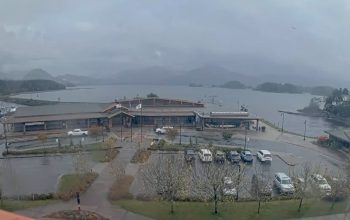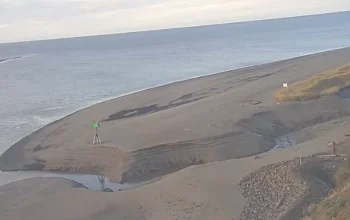
Watching the Wild: Colorado Mega Den Comes Alive
If you tune into the Colorado Mega Den Rattlesnakes Webcam, you’re not just watching snakes—you’re stepping into an ancient, living drama beneath a vast Colorado sky. The camera sits on a sandstone bluff, focused on a tangle of rock and brittle grass that seems lifeless at first. But wait long enough, and the illusion breaks. A bronze coil stirs. Scales catch the sun like moving glass. That’s Crotalus viridis, the Prairie Rattlesnake, the quiet ruler of these hills. Through the lens, you can almost feel the warmth rising from the stone. The air shimmers. Grass rustles with a dry whisper. A magpie chatters in the distance, its voice sharp against the low hum of crickets. The snakes move slowly, like living rivers. Each flick of the tongue tests the air, reading an invisible world of scent and temperature, the kind of map only a snake can follow.
The Prairie’s Harsh, Honest Beauty
The den lies in the heart of Colorado’s shortgrass prairie, where life survives by precision. Nothing grows here without grit. The ground ripples in pale gold and sage. Yucca spikes reach for the sun. Prickly pear pads flatten themselves against the soil, storing water for the lean months. Every hole and shadow hides something—a vole, a grasshopper, maybe a ground squirrel. Those small bodies are the foundation of the rattlesnakes’ diet, fuel for their patience. The predators are just as tough. Red-tailed hawks glide overhead, scanning for the slightest twitch. Coyotes prowl the slopes, and badgers dig through soft earth, unbothered by the risk of venom. Still, the snakes endure. The den itself—what biologists call a “mega den”—is their fortress. It’s been used for generations, a labyrinth of crevices where dozens of rattlesnakes gather to hibernate, breed, and wait out the long cold.
The Secret Life Beneath the Rocks
When you watch the den closely, patterns emerge. On cool mornings, clusters of snakes form living knots, soaking up heat from the stone. The camera captures their shimmer—muted browns, olive greens, hints of cream, every scale edged with texture. Males move first in spring, driven by the search for mates. Females, heavier and slower, linger near the surface, basking long enough to warm the developing young inside them. Prairie rattlesnakes give birth to live young—tiny, perfect replicas already wired for survival, each one with a small, glassy button at the end of its tail. Sometimes, you’ll see a tail twitch and hear the faintest ch-ch-ch, that unmistakable rattle. It’s not a threat. It’s a message: “I’m here. Let’s keep our distance.” The snakes aren’t out to strike. They simply want space, peace, the right to exist in a landscape that’s grown harder with every passing season.


